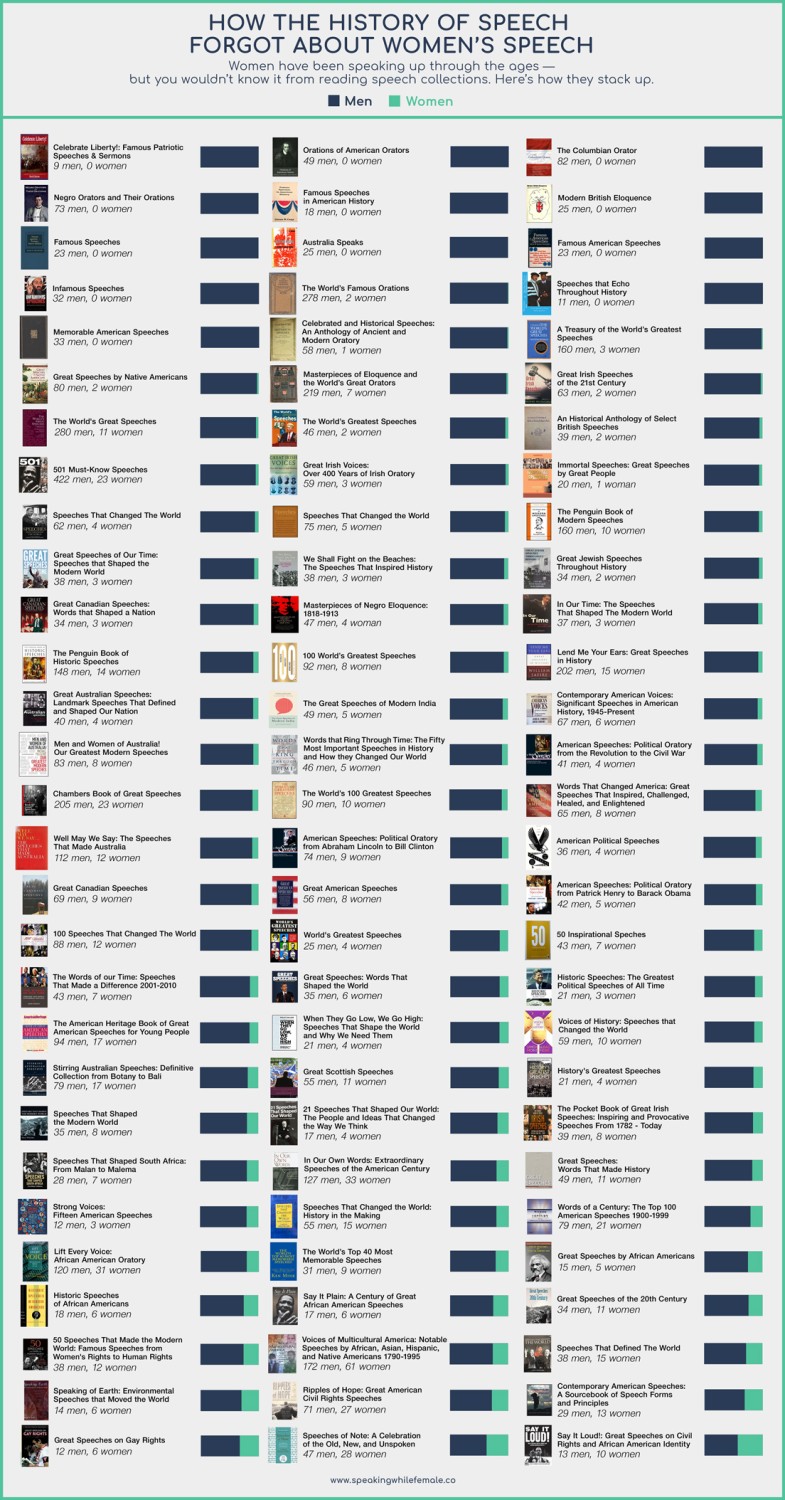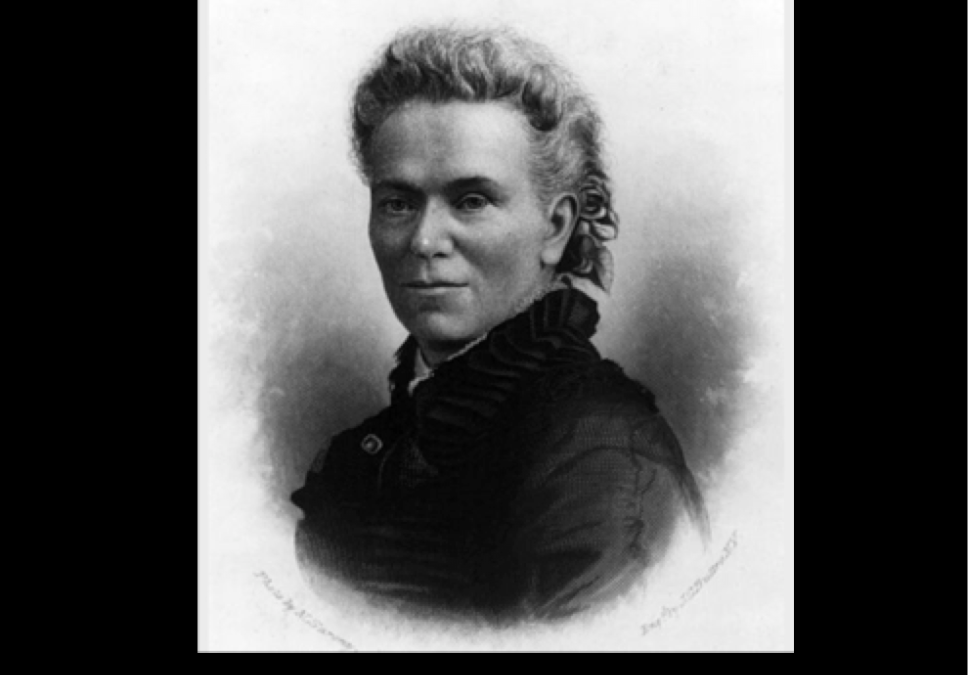by
_____
In the summer of 1852, a young woman in rural upstate New York read about an upcoming convention on women’s rights.
“I at once decided to publicly join the ranks of those who spoke against wrong,” said the 26-year-old Matilda Joslyn Gage. “I prepared my speech and going to the convention, sat near the front.”
In attendance at Syracuse City Hall were two thousand people, including some of the most prominent leaders of the women’s rights movement. Lucretia Mott was there, as was Susan B. Anthony, who read a letter from the eminent Elizabeth Cady Stanton.
Sitting in the audience, Gage found herself agreeing with the proposals in Stanton’s letter — that women and men should be educated together, for example, and that women who owned property should withhold their taxes until they could vote.
Her heart “palpitating,” she listened to more speeches, she said, “until I obtained courage to go upon the platform,” and deliver her talk, as biographer Angelica Shirley Carpenter describes in her excellent book, Born Criminal: Matilda Joslyn Gage, Radical Suffragist.
Instead of focusing on what what women could achieve in the future, like the other speakers, Gage turned the discussion upside down to celebrate what had already been achieved — by women such as Assyrian queen Semiramis; Sappho, the Greek poet; scientist Helen Lucretio Cornano; astronomers Maria Cunitz and Caroline Herschel; the seventeenth-century artist Anna Maria van Schurman; and contemporary women such as Queen Victoria of England, singer Jenny Lind, and author Harriet Beecher Stowe.
She talked about women whose accomplishments had so often been suppressed or even claimed by men. Several times the audience interrupted her with applause.
Afterwards, Lucretia Mott took the podium. “The paper is so fine,” she said, “I fear the young lady was not heard distinctly by the audience, and I move that it be published.”
Which it was, as a pamphlet. Gage was the youngest speaker the conference, but her career as a public intellectual was launched. A few months later, a notice in the New-York Tribune announced that Matilda Joslyn Gage would accept public speaking engagements.
Matilda Joslyn Gage should be a household name. Instead, she’s barely known, even to most feminists.
Her causes were nothing short of revolutionary. Among the many she pursued in her lifetime were abolition (her home was a stop on the Underground Railroad), women’s rights, Native American rights, separation of church and state, the justice system’s inadequate prosecution of rapists, the working conditions of women in factories, and the failure of men to take responsibility for unwanted pregnancies.
At a time when women who dared express their political views in public were cursed, scorned, ridiculed, laughed at, hissed at, spit on, called “manly,” “evil” and worse, Gage courageously put public speaking at the center of her activism.
Her speeches — along with the monthly suffragist newspaper she edited and her many tracts and essays — are distinguished by a fierce intellect, a freethinking sensibility, and a far-sighted approach to social and political issues. She was also a champion of her long impoverished son-in-law, writer, L. Frank Baum, who succeeded later in life with The Wizard of Oz series.
Matilda Joslyn Gage should be a household name. Instead, she’s barely known, even to most feminists. She’s living proof of “The Matilda Effect,” the well-documented phenomenon in which the accomplishments of women are forgotten, omitted from the history books.
She herself first described this phenomenon in her 1870 essay “Woman as Inventor,” and she talked about it in her 1884 speech “The Feminine in the Sciences.”
Fittingly, a century later the “Matilda Effect” was identified and named by historian Margaret W. Rossiter. Working on her postdoctoral study of 20th century American science, Rossiter delved into the classic reference work American Men of Science (now American Men and Women of Science) and discovered the hidden work of 500 female scientists. Not only was their work unrecognized, it had often been credited to men.
She described her findings in a 1973 talk, “Women Scientists in America before 1920,” later published in American Scientist. To honor Matilda Joslyn Gage, she later called it “The Matilda Effect” — that all-too-common blind spot when it comes to women’s contributions in history.
In its October 2019 issue, Smithsonian Magazine puts a long-overdue spotlight on both Gage and Rossiter: “. . . separated by more than a century, the two nonetheless have almost a symbiotic relationship, with the work of one giving new life to that of the other in a collaboration across time to advance the role of women . . . ” says journalist Susan Dominus.
In recent months, I’ve made a “Matilda Effect” observation about the world of public speech. After a systematic search of dozens of English-language speech anthologies, I’ve discovered that for the past two hundred years publishers have consistently ignored or shortchanged women’s contribution to speech and the public square.
In collections with titles like “the world’s greatest speeches,” “world-changing speeches,” and speeches that “shaped,” “defined,” or “made” the world, women’s public voice has either been absent or woefully underrepresented.
Take a look at this graphic, which shows the ratio of male-to-female speeches in 87 speech anthologies published from 1797 to the present.

That’s why I created Speaking While Female, the first-ever online collection of women’s speech — to showcase hard-to-find oratory by women, from Hortensia in 42BC to Greta Thunberg at the United Nations.
More than 1,500 important speeches by women appear on the site by pioneers like Sarah Winnemucca, Ernestine Rose, Voltairine de Cleyre, Mary Dennett, Charlotte Maxeke, Margaret Murray Washington, Mary MacSwiney, Olive Schreiner, along with hundreds more.
Some may say it’s unfair to expect gender equality in a historical survey of public speech, given that women haven’t held positions of institutional power in the same numbers as men — and therefore haven’t had the same authority, visibility and impact.
The facts say otherwise.
Despite the prejudice and prohibitions, many thousands of women in history have used their voices to effect real change. Rhetorical firepower, incisive analysis of social ills, radical reframing of entrenched ideas — all these characterize their speech.
Women speaking out have spurred reform, launched social movements, and shaped public discourse. But history has turned a blind eye to women’s words and their real-world effects.

Matilda Joslyn Gage, who urged us to remember the accomplishments of women, has herself scarcely been remembered. Her speeches are not reprinted in any of the anthologies I surveyed.
But Speaking While Female presents seven powerful speeches by Gage, including her 1870 Decade Speech in which she predicts women will be ascendant in every field, from science to medicine, literature, politics, even police work.
You can see the pamphlet of that speech at the Library of Congress website here. And on Speaking While Female you can read Gage’s words from September 1852, when she dazzles that Syracuse audience with her first foray into public speaking.
At the end of the speech, Gage lays down a challenge to historians and chroniclers of every human endeavor: “ONWARD! Let the Truth prevail!”
© Copyright 2019
________________________________
Want to talk? Reach me at dana@danarubin.com

